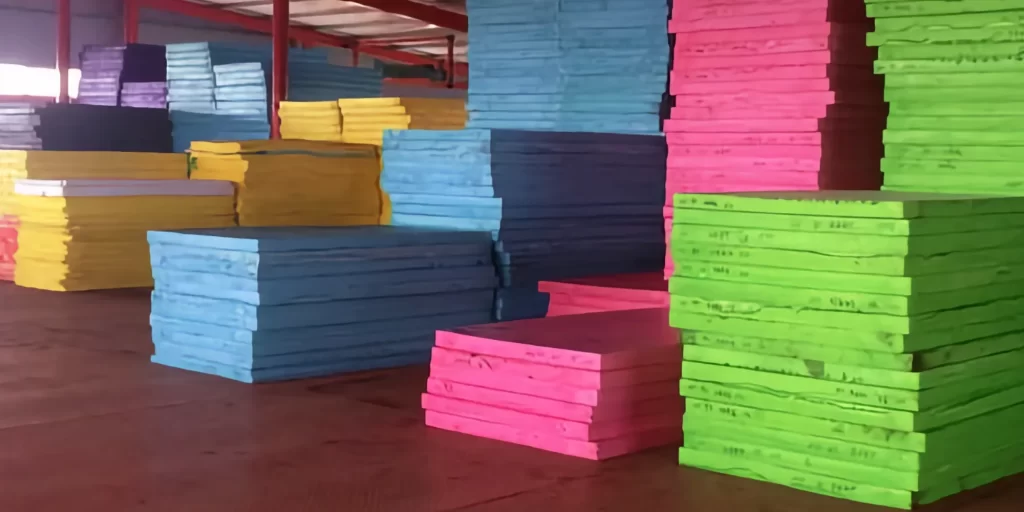In the realm of medical footwear, the choice of materials is crucial for patient comfort, support, and therapeutic effectiveness. Ethylene-Vinyl Acetate (EVA) foam has emerged as a groundbreaking material in this sector, known for its cushioning, lightweight properties, and adaptability. This article delves into the benefits of EVA foam in medical footwear and addresses frequently asked questions about its application in this specialized field.
The Benefits of EVA Foam in Medical Footwear
EVA foam brings several key advantages to medical footwear:
1. Superior Comfort and Cushioning:
EVA foam provides exceptional comfort and cushioning, reducing stress on joints and enhancing the overall comfort of medical footwear.
2. Lightweight and Flexible:
Its lightweight nature makes EVA foam ideal for medical footwear, reducing fatigue and making it easier for patients to move around.
3. Customizable Fit:
EVA foam can be easily molded to fit the unique contours of a patient’s foot, ensuring a precise and comfortable fit, which is crucial in therapeutic footwear.
4. Durability:
EVA foam is resilient and maintains its shape over time, making it suitable for long-term use in medical footwear.
5. Shock Absorption:
Its excellent shock-absorbing properties help protect the feet and joints from impact, an essential feature for patients with foot-related ailments.
6. Hygienic and Easy to Clean:
EVA foam is resistant to bacteria and easy to clean, an important aspect in medical footwear to maintain foot health and hygiene.
Applications of EVA Foam in Medical Footwear
Orthopedic Shoes:
EVA foam is used in orthopedic shoes to provide support and alleviate pain for individuals with foot conditions like flat feet or plantar fasciitis.
Diabetic Footwear:
In diabetic footwear, EVA foam helps in reducing pressure points and enhancing blood circulation, crucial for diabetic patients.
Post-Operative Shoes:
Post-surgical or post-injury, EVA foam shoes offer the necessary support and comfort during the recovery phase.
Custom Insoles:
EVA foam is ideal for creating custom insoles, offering tailored support and cushioning based on individual foot conditions.
Therapeutic Slippers:
Used in therapeutic slippers, EVA foam provides comfort and relief in home settings for individuals with foot ailments.
Enhancing Patient Care with EVA Foam in Medical Footwear
The integration of EVA foam into medical footwear represents a significant advancement in patient care, focusing on comfort, support, and therapeutic effectiveness.
FAQs About EVA Foam in Medical Footwear
Q: How does EVA foam improve the comfort of medical footwear?
A: EVA foam enhances comfort through its excellent cushioning properties, reducing pressure on the feet and providing a soft, comfortable fit.
Q: Is EVA foam suitable for all types of medical footwear?
A: Yes, EVA foam’s versatility makes it suitable for a wide range of medical footwear, including orthopedic shoes, diabetic footwear, and post-operative shoes.
Q: Can EVA foam insoles be customized for individual needs?
A: Absolutely, EVA foam can be molded to create custom insoles that match the specific contours and requirements of an individual’s feet.
Q: Are EVA foam medical shoes durable for long-term use?
A: EVA foam is known for its durability and resilience, making it ideal for long-term use in medical footwear.
In conclusion, EVA foam has become an essential component in the field of medical footwear, providing enhanced comfort, support, and therapeutic effectiveness. Its combination of cushioning, lightweight design, and adaptability makes it an ideal choice for a variety of medical footwear applications. As the focus on improving patient care and comfort continues to grow, EVA foam-enhanced medical footwear is set to play a significant role in enhancing the quality of life for individuals requiring specialized foot care.






